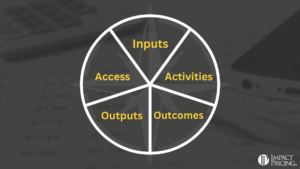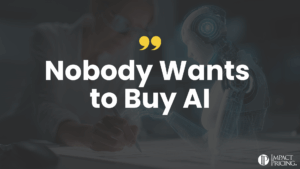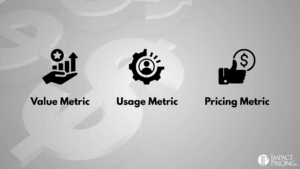Many SaaS companies who offer an infrastructure type SaaS product that runs on AWS (or similar) sell credits. There are likely two key reasons for this:
1. They couldn’t come up with a better pricing metric.
2. They want to make sure they cover their AWS costs, which fluctuate dramatically by user.
The previous two blogs were about selling credits and why they are sub-optimal. If you haven’t read them you may want to go back. This blog offers a possible solution.
First, a short story. Thirty years ago, I was a salesperson for Tektronix. My job was to sell test instruments that could be controlled by a computer. Tektronix also sold the computers. The problem is, they expected their normal margin, regardless of what was sold, so we tried to sell PC’s at double the price you could buy at the local electronics store.
Tektronix didn’t ask my opinion, but if they did I would have suggested one of two options. Either tell people to provide their own PC, or resell PCs at a small margin, one that would be more acceptable to their customers. In other words, separate the price of the computer from the price of the instruments.
If you’re thinking about selling credits, my advice to you is exactly the same. Separate the AWS bill from the price you charge for your product. You could let people pay their own AWS bill or you could just tell them that you’re passing through the cost with a small margin to cover your expenses. Then you price for the value your product or service provides.
This way you aren’t encumbered by the cost of the underlying computing power in your pricing model. You are freed up to discover and use a much more effective pricing metric. Think hard about how your customers get value from your product. You should be able to come up with a pricing metric that is correlated with that value. This type of pricing makes sense for you and your buyer.
A similar pricing technique happens in manufacturing. Some companies sign long term contracts with their customers while putting in terms so the customer is responsible for the fluctuating cost of certain materials like gold. These manufacturers aren’t in the business of selling gold. If manufacturers didn’t price this way, they would have to add a large margin to compensate for the risk of gold prices increasing. Separating the price of gold from the rest of the product enables the company to price the product based on value without the risk of fluctuating gold costs.
Just like manufacturers aren’t in the business of selling gold, you are not in the business of selling AWS. Try to separate the pricing. It will likely make more sense to your customers and you will likely grow faster.















